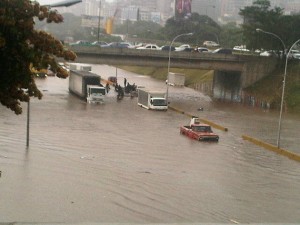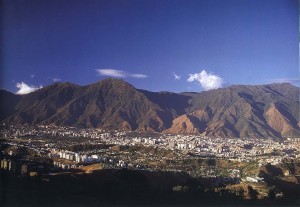The Advanced Architecture is defined by the ability of combining or establishing simultaneity relations between the different layers of information. Architecture has and is evolving to a more complex discipline and by doing so, is every time more influenced by other doctrines. As the study of the biology and natural objects has inspired the “form finding” and the parametric design, architects must be open to take every piece of information available to make better and more efficient designs.
Since the beginning of times the society has been ruled by economics: trades, basic ways of supply and demand, among others. At the same time Architecture, as I see it, was born in nature since the moment a cave was adapted as a shelter. Then, If nowadays Architecture is all about relating the available information in some determinate point, how can we leave aside the economic factors when we can almost breath them in the air?
In some point, as Architects, some time we cannot trace a difference between the price and the value of an asset and how the externalities, the unilateral effect and the non compensation are effects produced by our designs without even know it. We may fall into the banal design. After all, what is a high tech building, with all the technologies that make it “sustainable” when it is full of unsustainable users? Isn’t the design capable of changing people’s behavior by reducing the consume and maybe turning people into the energy generators themselves? and Can we reduce the need of technology through the understanding of the environment and by ecosystem-based management approached? The answer is yes and, after all, most of the green technologies even when the reduce the operational costs, have an unsustainable production background which takes the final balance to a high unexpected number.
In this line of thought, we can think of our cities as a more or less sustainable spaces, not just taking into account the use of technologies, but also other factors related with urban organization and social behavior for example.
Caracas, my hometown, has been suffering from a disease that rather from seem to be in process of containing, keeps spreading. For once, let’s leave aside the political context where Venezuela´s problems has been subscribed and the where all venezuelan, somehow, find the reasons of our crisis. Even if they are considered, in most of the cases or, depending on the approach, in all of them, the isolation paradox plays a highly important roll on the development of the city. Individual decisions turned into mass behavior determinate the consequences whether they are good or bad. At this point we all have the control to make a change.
There has been some initiatives to improve the mobility in the city not only for integrating physically the slums but also socially. In 2010 the Metrocable de Caracas came up as an structure for offering a safer alternative to the existing circulation (stairs and steep roadways) to the residents of the slums. It started operating by transporting around 1200 people per hour from the center of the city to one of the adjacent slums. The use of this system derived in constant robberies in a small cabine for 8 persons.
Is this part of Urban acupuncture? Is the solution to the urban problems in small isolated actions along the city?
Although theoretically the approach seams valid, the solution has to be able to change people’s behavior, then if one of our major problems is the criminality, an isolated transporting system won’t be the answer.
In my opinion, infrastructures like the Metrocable are reasonable solutions, although they must be seen as a minor part inside a major plan. Taking as an example Medellin, in Colombia, where several projects where developed as part of large scale project including public libraries, squares, schools, among others, all of them located in slums, dangerous and poor areas with the aim of “bringing the light to the slums” which used to be close and dark favorable spaces for the development of crime.
By convincing specific owners, some informal housing were demolished to accommodate the new architectural interventions and these owners received well prepared apartments in properly constructed buildings around the area. While at first the mistrust where impeding the development, then everyone wanted to be part of the change, at this point the change of behavior was starting.
This way, a series of urban and architectural projects were able to change people’s behavior, which can be achieved by building the right structures instead of teaching people. By this approach, not only the quality of life in the slums where improved, but they were also re-educated and the line that demarcate the segregation was blurred
By the other hand, Caracas is a highly unsustainable city in terms of mobility. According to experts, only 2% of the vehicles that circulate through the city are categorized as public transportation, where 1.3 million of cars in Caracas are private and the average amount of person per car is 1.5.
This behavior responds to the bases of economics in Venezuela: Oil. We are a country which development was founded on the nationalization of the Oil Industry in the 40′s. The rapid increase of the incomes catapulted the premature development. New infrastructures and architectural projects were done to match the economic boom. Our economy, which used to be agricultural rapidly turned transforming progressively Venezuela into a monoproducer country. The slums and the overcrowding started to appear once farmers started to look for opportunities on the business in the Capital. As the country with the greatest proved reserves of oil in the world, and where this last is sold cheaper than water, the society’s concern about consumption and its consequences is quite poor.
Considering that architects develop self-sufficient buildings, would we be contributing to solve any problem? We would not. We would be back at the matter of green buildings filled with unsustainable users. There is no technology for fighting unsustainable behaviors and we do not need it to counteract pollution either, we just need the right infrastructures and organization in urban terms to achieve a rational change.
On the other hand, Venezuela provides a tropical climate with a wide range of possibilities. In the specific case of Caracas, located in a valley and surrounded whether by slums or green hills, the symbol of the city is represented by the evergreen Avila mountain with 85.192 Ha of protected area. This space acts not only as a “vegetal lung” that reduces the pollutants generated mainly by transportation, but also as the only source of clean water inside the city generated in the ravines which are currently used a waste water system once they enter the city. Having knowledge of this advantages in addition to a high rate of rainfall that constantly generates floods, it seems irrational that the main source of water comes from Camatagua reservoir, located approximately 130 km away from the city.
By using conventional infrastructures in combination with nature-based system we could not only generate a green output but also, reinforce the identity of the social context subscribed in a determined spatial frame. However, as it was showed on previous cases, this must be developed while the primary challenges as the housing problem are tackled. By this, it is essential to generate a collective self-esteem in the areas in disadvantage in the city: in the particular case, the slums. I think Medellin’s development is a fundamental case study to the resurgence of Venezuela, this time, along a mature process of change.
Through my personal experience during this lectures, I believe the introduction to economics is a fundamental step for understanding the scope of architecture and what it can mean in the society. Although I had never been completely detached to Venezuela’s economy for growing up in an environment where politics, economics and culture are constantly exchanging information in the continuous hassle of our society, this world wide perspective opened a complete new range of possibilities to tackle situations that I would never had seen related with architecture before. By a deeper observation and analysis of our environment I truly think and excites me the most the direction Architecture can follow.
Images from:



